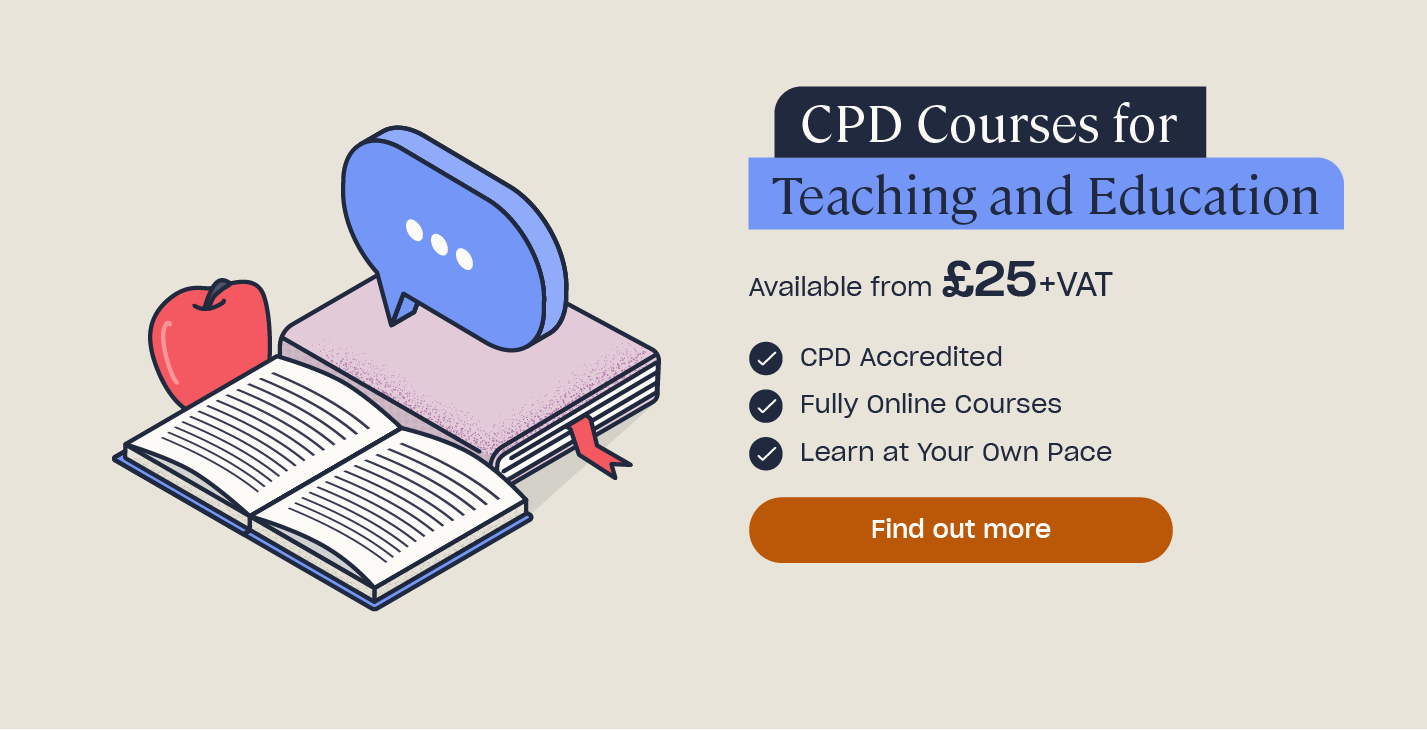Metacognition in the Classroom: Benefits & Strategies
Research by the Education Endowment Foundation has found that metacognition is key to effective pupil learning: it can add up to seven months of additional learning, and improve the outcomes of disadvantaged learners. Not only that, but it is a way for teachers to gauge how well their students understand their own learning processes and regulate their learning, so that they can support them accordingly. This is a key challenge in the field, particularly when remote learning is taking place.
In this article, we will outline what metacognition refers to, why it is important in education, and which strategies you could use to teach it in your classroom.

What is Metacognition in Education?
The term metacognition refers to an individual’s ability to plan, monitor, evaluate, and make changes to their own learning behaviours in order to confront challenges more effectively. You might have heard it defined as ‘thinking about thinking’, but the elements of active monitoring and modifying of thought processes make it much more than this. It is also a form of self-regulation, involving self-awareness, critical analysis skills, and the ability to problem-solve.
For students, having metacognitive skills means that they are able to recognise their own cognitive abilities, direct their own learning, evaluate their performance, understand what caused their successes or failures, and learn new strategies. It can also help them learn how to revise. This is because it optimises their basic cognitive processes, including memory, attention, activation of prior knowledge, and being able to solve or complete a task. It makes them learn more efficiently and more effectively, and so they are able to make more progress.

For example, a student with metacognitive skills might:
- Recognise that they have trouble applying formulas in maths.
- Think about the maths problems they have solved before, and the strategies they used.
- Apply these strategies, assessing whether they are working or not.
- Try a different strategy if the one they are using is not effective.
- Reflect on how they performed in this task, and use this to inform their future work.
Metacognitive skills are useful across all subjects, because they enhance the way you learn, as opposed to what you learn. They are also teachable; as a result, teachers of all subjects should help their students to develop them. In the sections below, we will give you some ideas as to how you can do this.
Why is Metacognition Beneficial in Student Learning?
The potential benefits of metacognition in learning are as follows:
- Higher achievement levels for the students. Metacognitive practices can also compensate for any cognitive limitations that a student might have, according to research such as this.
- Increased ability to learn independently. Being able to monitor their own progress lets them take control of their own learning, inside and outside the classroom.
- Improved resilience. Identifying their successes and failures, and which strategies work best for them – or which have failed – increases students’ perseverance in getting better at their work.
- It aids disadvantaged students. According to this report, and research by the EEF, teaching in a way that supports metacognition is beneficial for students who are at a disadvantage to their peers.
- Cost-effectiveness. This method of teaching does not require specialist equipment, nor any other large purchases – it only requires teachers to be trained in the method effectively.
- Transferable knowledge. Metacognition helps students to transmit their knowledge and understanding across tasks and contexts, including reading comprehension, writing, mathematics, memorising, reasoning, and problem-solving.
- Effective for all ages of students. Research has looked at both primary and secondary students – and even those who have not yet started school – and found benefits in all cases.
- Emotional and social growth. Gaining awareness of their own mental states allows students to think about how to be happy, respected, and confident in themselves. They are also better able to understand other people’s perspectives.

How Do I Teach Metacognition?
Although metacognition is about students taking control of their own learning, a teacher is still required to help them develop skills and strategies in order to do so. The EEF recommends that you teach metacognition alongside subject content, rather than having specific ‘learning to learn’ or ‘thinking skills’ sessions. These sessions are ineffective, because students find it hard to relate generic tips to subject-specific learning.
There are several other things to consider before taking metacognitive strategies and activities into the classroom. These are:
Facilitate Metacognitive Learning Through Lesson Structure and Environment
Your whole lesson needs to be structured in a way that allows students to practise metacognitive strategies. Broadly, you need to split lessons into four stages: You, Plan, Do, and Review.
The ‘You’ stage involves giving students a lesson starter where they need to consider their prior knowledge on a topic, and any strategies they have previously used to learn about this topic.

The ‘Plan’ stage consists of setting pupils a task (a learning goal). The learning goal needs to be clear and explicit. Students will have to plan their approach to it, the strategies they will use, how long it will take them – so they can allocate the right amount of effort – and what could potentially go wrong. Predicting how well they will perform a task can also aid metacognition.
In the ‘Do’ stage, the pupils will carry out the task, monitoring their progress as they go. To help them do so, you could stop halfway through, giving them sentence scaffolds to reflect on (such as ‘I am doing the task successfully because…’, ‘this strategy is working because…’, ‘I am confused by…’, ‘I might have to change my strategy because…’, and ‘my next steps are…’). It is particularly important to highlight anything they are confused by, because this shows students that confusion is an integral part of learning. Recognising what we don’t understand also leads to better metacognition.
Finally, in the ‘Review’ stage (usually at the end of the lesson), you should allow your students time to review what they have learnt – how successful was their strategy in helping them achieve their learning goal? What did and didn’t go well? What could they do differently next time, and what other types of problem could they use this strategy for?

Provide Appropriately Challenging Tasks
In order for students to develop new metacognitive strategies, learn from their mistakes, and reflect deeply on what they have learnt, the tasks they are given need to be difficult (but within reach). If pupils are given something challenging to do, they are more likely to remember information from this task in the future than if they are given something too easy. However, the work should not be too challenging for their capabilities: this leads to cognitive overload, where their thinking fails because they are trying to hold too much information in working memory. You need to assess the metacognitive abilities of your students, and provide work accordingly.
A popular framework for defining the levels of metacognitive learners comes from David Perkins (1992). There are four levels of learner:
- Tacit learners, who are unaware of their metacognitive knowledge. They do not think about any particular strategies for learning, and merely accept if they know something or not.
- Aware learners, who know about some of the kinds of thinking that they do, such as generating ideas, finding evidence, etc. However, thinking is not necessarily deliberate or planned.
- Strategic learners, who organise their thinking by using problem-solving, grouping and classifying, evidence-seeking, decision-making, etc. They know and apply the strategies that help them learn.
- Reflective learners, who are not only strategic about their thinking, but also reflect upon their learning while it is happening. They consider the success or failure of any strategies they are using, and revise them as appropriate.
Once you know what level students are on, you can plan your support accordingly. For example, with tacit learners, you will need to focus on all aspects of metacognition, guiding them through the process of learning. With higher-level learners, you can withdraw some support.

Give Them Learning Strategies to Use
Before students can use and assess different learning strategies, they need to know some of these strategies. You will need to explicitly teach them how to learn, as well as giving them opportunities to monitor and review their knowledge. One way to do this is by modelling your own metacognitive approaches: show the students how you would approach a task, illustrating your thought process as you do so.
For example, if you are asking students to write a paragraph of an essay, you should write your own example on the board, explaining the decisions you are making (such as how you choose the right subject terminology), and how you correct and improve your work to create a second draft. For instance, ‘I’m not sure if I’ve got this term right, but I remember seeing it in the textbook, so I’ll check there’, ‘now that I’ve written a bit more, I’ve realised that this sentence could be cut, because it’s repetitive’, or ‘I have done a similar piece of work before, so I’m going to look at my feedback on that and use it to write this one’.
You should also model resilient behaviours as you do so, such as ‘this is really hard, and I’m not sure if I’m doing it right, but I know it will be useful practice for my exam, so I’m going to keep going’. Illustrate where students can look for help, such as the marking criteria.

This is extremely useful for students, because it shows them how to succeed behind the scenes – the struggles that everyone goes through in order to become good at a type of work. It makes it clear that we aren’t just born with the ability to do things; our brains grow and develop as we practise (a growth mindset).
Metacognitive Strategies & Activities for the Classroom
We have compiled a list of 12 tips, strategies and activities involving metacognition that you could use alongside modelling and ‘You, Plan, Do, Review’. These are:
1. Learning/Thinking Journals
Journals help students to develop their self-awareness, improve their ability to plan and monitor progress, and promote skills in self-reflection. Try asking your students to keep personal learning journals, and assign them weekly questions for them to reflect on, such as:
- What was easiest for me to learn this week, and why?
- What was most challenging for me to learn, and why?
- Which study strategies worked well?
- Which study strategies didn’t work well, and what could I do differently next time?
- Did my study habits work well for me? What effect did they have on my learning?
- Which study habit could I improve upon next week?
- What are my targets for next week?
They could also record ideas they have during a lesson and questions they want to ask, as well as reflecting upon how the ideas they have learnt connect to other topics.

The journal doesn’t necessarily need to be a notebook – your students could use any format that works well for them, including a mind map, blog, list, mobile phone app, or something else.
2. KWL Charts
A KWL chart is a way of tracking the ‘You, Plan, Do, Review’ process. The idea is to create a chart for your students to use, with space for them to answer the following questions:
- What do I know?
- What do I want to know?
- What did I learn?
These questions (know, want, and learn) make up the letters in KWL. At the beginning of the lesson, students can answer the first question – what they already know that might help them in this lesson. This will activate their prior knowledge, and highlight any misunderstandings.
The second question provides you with ideas for future learning activities. Students could structure their answers in the form of ‘how…?’, ‘when…?’, or ‘why…?’ questions.

The monitoring stage is not included in the KWL chart, but you could ask your pupils to ask themselves their own questions, such as ‘how am I doing?’ and ‘is this strategy working?’.
At the end of the lesson, students can answer ‘what did I learn?’, as well as filling in anything else they want to know that remains unanswered. It is good to reflect on their own cognitive growth, such as ‘before this lesson, I thought that ___. Now I know that ___.’
3. Essays
Research such as this has shown that essays require higher-level metacognitive skills – multiple-choice questions, in contrast, use lower-level skills. As a result, asking your students to write essays, especially when preparing for exams, could help them to prepare and learn as much as possible.
4. Rules About Asking for Help
Instead of getting students to put their hands up as soon as they need help, set some rules that make them more involved in the thinking process. For example, you could ask them to go to a fellow student – or group of students – to discuss it first, and only to ask you if they can’t find the answer together. You could also try getting students to think about exactly what they need to know, or which part of their work they need to improve, before coming to you. This helps them to practise self-directed learning.

5. Mnemonics
Teach your pupils techniques such as mnemonics to help them remember difficult information. This ensures that they are less likely to experience cognitive overload, allowing them to move on to higher-level thinking.
You could use expression or word mnemonics, such as ROY G BIV to remember the colours of the rainbow (red, orange, yellow, green, blue, indigo, violet). The same thing could be remembered in a mnemonic sentence, such as ‘Richard of York gave battle in vain’.
6. Exam Wrappers
These are worksheets containing reflective questions that help students to think about their performance in a test or exam. You could give them to your pupils both before and after they receive their results and feedback.
The worksheets given out before they receive feedback should ask them to think about how they prepared for the exam – for example, which study strategies they used. Those given out after the feedback should make the student reflect on the mistakes they made, and how they could prepare differently to ensure greater success in the future, making them strategic learners.

7. Metacognitive Talk
Metacognitive talk involves talking through what you are thinking while you carry out a task. This can help students to focus and better understand their thought processes. You could try implementing this by first modelling how to do it – work through a task in front of the class, talking out loud as you do so – and then letting the class have a go.
The questions your students should ask and answer out loud are:
- What do I know about this topic?
- Have I done a task like this before?
- What strategies worked last time?
- What do I need to do first?
- How am I doing?
- What should I do next?
- Should I try a different strategy?
- Who can I ask for help?
- How well did I do at this task?
- What could I do differently next time?
8. Reciprocal Teaching
This strategy allows students to take on the role of teacher and attempt to teach learning strategies to other students. For example, if they were teaching reading comprehension, they might show their fellow students how to question what they’ve read, clarify things they don’t understand, summarise the text, and make informed predictions about what they have read. This can help metacognition by deepening their knowledge and understanding of each learning strategy.

9. Traffic Lights
Traffic lights can be used in a variety of ways in the classroom; in this instance, students could use them to signify what they found confusing or challenging in a lesson (red), what made them think differently about something (amber), and what they understood well (green). They could fill in a traffic light worksheet answering these questions at the end of each lesson. This method makes them reflect upon their learning, developing their metacognitive abilities. Smiling, frowning, or neutral faces could be used in the same way – this might be a good strategy for encouraging metacognition in the primary classroom.
10. Feedback
Being given feedback makes students think about what they have done and how they could improve it – as a result, it is a key way to develop metacognition. However, you should ensure that the feedback you are giving is effective; our article ‘Effective Communication in the Classroom: Skills for Teachers’ discusses how to do this.

11. Reflexive Thinking
Talking about and becoming aware of biases – for example, societal biases – is a metacognitive process called reflexivity. Having classroom discussions about these topics encourages students to consider what they’re unconsciously thinking. Try talking about moral dilemmas, racism, wealth, poverty, and justice.
12. Goals
Encourage your students to set their own goals. This is one of the best ways for them to monitor their learning progress, and review whether they need to make any changes. Make sure that their goals are challenging but realistic, and that they are focused on developing learning and building skills.
Encouraging metacognition in the classroom is a way to ensure that your students are learning effectively. This will help them throughout their lives by developing their resilience, memory, self-awareness, reasoning skills, and problem-solving abilities.
Further Resources:
- CPD Courses for Teaching Staff
- Effective Communication in the Classroom: Skills for Teachers
- Professional Development Plan for Teachers
- What is Effective Questioning & Why Should I Use it in My Classroom?
- How to Use Assessment for Learning in Schools
- Ideas for Genius Hour in the Classroom











